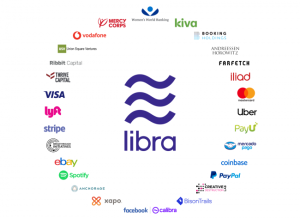When an idea grows far beyond its original conception, develops its own culture, factions & internal dynamics, and through implementation compromises with the real world, it can become the very enemy of what it first espoused. Just as Marx would have been horrified at Stalinism, Adam Smith disgusted by today’s capitalism, so proponents of Bitcoin’s ideals should now be distancing themselves from what it is becoming.
The economic arguments are pretty compelling. Bitcoin was hailed as a way to democratise finance, yet with transaction fees now touching $20 it is out of reach of the poor. Bitcoin was supposed to be decentralised, yet now 80% of mining power is under a single government which seems to disapprove of it. Bitcoin was hailed as the disintermediator of banks, yet banks are vital to society as issuers of credit, which Bitcoin cannot do, being trustless. Other Bitcoin maximalist ideals about its augmenting the role of gold are, I suspect grounded in flawed economics, and do nothing to improve the condition of humanity.
But all of these arguments are soft compared to the problem of Bitcoin’s energy consumption. In 2009 proof-of-work was a technological breakthough and the energy cost seemed a reasonable price to pay for a distributed ledger technology. But in reccent months, as Bitcoin’s price escalates, and with it the mining competition, its power consumption is rampaging up the index of countries. This Bitcoin energy consumption index estimates (November 2017) that Bitcoin uses more energy than the country of Ireland! And no upper limit on Bitcoin’s price means no upper limit on its power consumption either. While many, such as Andreas Antonopolis, predicted that the crypto-economy would be an ecosystem of many currencies, in the last six months we are seeing the opposite tendency as Bitcoin’s dominance (over other cryptocurrencies) is increasing.
That means Goldman Sachs’ optimism about Bitcoin’s price should be read not as cause for celebration but as the herald of an environmental disaster, comparable perhaps to the Kuwaiti oil fires of 1991 in which Saddam Hussein punished the USA by setting fire to over 600 oil wells which took months to extinguish.

Kuwaiti oil fires after Operation Desert Storm.
There are more and more articles appearing to point this out, but not many are saying what can be done. Bitcoin would be harmless if all the mining was done with free geothermal energy in Iceland. Who might invest in sufficient infrastructure to produce that quantity of geothermal energy?
I’m no expert, but Bitcoin could switch to a proof-of-stake consensus model, but this is likely to prove impractical because the vested interests and voters – the miners – would have to write-off all their hardware. Another hard fork is possible, but pointless if it fails to pull the capital out of the legacy blockchain. The more hedge-funds pile into bitcoin, the more credible and the more valuable it gets, the more risk-averse money will pile in too, surely without regard for any environmental or economic concerns – not to mention the human rights implications of those.
So unless Bitcoin is a bubble and one day it bursts like never before, capital gains from Bitcoin should be regarded as toxic, like shares in Raytheon or Texaco, or blood diamonds.
It’s clear that, like Alan Greenspan’s finance sector, Bitcoin is not a self-regulating entity, and, being inflexible by design, perhaps it can never be. Another approach then, could be the mass adoption of a more modern cryptocurrency with a better design. There are no shortage of superior candidates vying to take Bitcoin’s crown. My interest has been piqued by:
- IOTA which is scalable and fast
- Faircoin with its participatory governance and proof-of-cooperation
- Holochain (Pre-ICO) which isn’t a blockchain at all
- Chia (Pre-ICO) with its proof-of-time and proof-of-diskspace
If there was sufficient feeling in the cryptocommunity that Bitcoin was toxic, we might see captial starting to divest into other coins, and new fortunes made as the money gradually convened around one or more other coins.

Chinese Bitcoin mine.
On the other hand, if this community does not conduct itself in a socially and environmentally responsible way, then are not governments justified in stepping in to regulate it? Is not excessive CO2 just as antisocial as polluting the environment?
What we can do about this depends on who we are. Investors might diversify their portfolios, weighting more heavily the coins they want to win. Exchanges might create markets between different altcoins rather than assuming all transactions are either to or from Bitcoin or Ethereum. Fund managers could create ethical crypto-funds, meaning they avoid proof-of-work coins. Software developers could focus more on multi-currency support. Governments could distinguish between coins for tax purposes, perhaps continuing to clamp down on Bitcoin now and remaining undecided what to do with other coins. We have much to thank Bitcoin for. And if getting rich without working was all that mattered then we could go full steam ahead. But in a planetary emergency, we cannot afford to get stuck on unhelpful ideologies. Almost everything Bitcoin stands for can be better advanced by our swarming around newer technologies.
 Matthew Slater develops software for complementary currencies. He co-founded Community Forge, which free hosts software for collaborative credit schemes; he co-authored the Money & Society MOOC, a free masters level multidisciplinary online course. He co-drafted the Credit Commons white paper, a proposal for a global solidarity economy money system, based on mutual credit principles. He blogs here.
Matthew Slater develops software for complementary currencies. He co-founded Community Forge, which free hosts software for collaborative credit schemes; he co-authored the Money & Society MOOC, a free masters level multidisciplinary online course. He co-drafted the Credit Commons white paper, a proposal for a global solidarity economy money system, based on mutual credit principles. He blogs here.














3 Comments
Ok so what about this:
How much is the worlds banking infrastructure consuming?
https://www.bitsonline.com/bitcoin-vs-banks-uses-energy/
So that says that Bitcoin uses about one quarter the amount of electricity that the banks use (but it’s grown a bit since that article – see https://digiconomist.net/bitcoin-energy-consumption).
But if you look at this – https://www.investopedia.com/tech/how-much-worlds-money-bitcoin/
It’s from June, but still, Bitcoin transactions represent less than 0.001% of bank transactions.
So per unit transacted, I make it that Bitcoin is about 25,000 times more energy-hungry than banks.
I was very glad to see Iota at the top of your list of what has piqued your interest! They are the best solution I have seen that could scale to any size with the fewest problems. The founders have a vision of greater equity and prosperity for all and seem to give a lot of thought about the long-term impacts of design decisions.